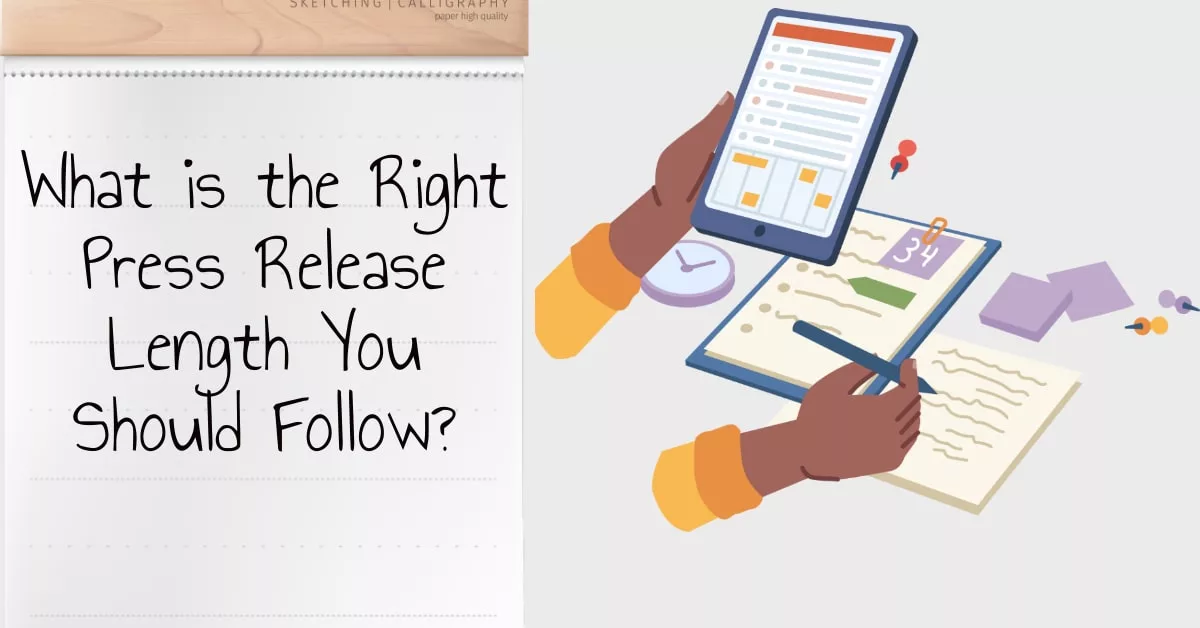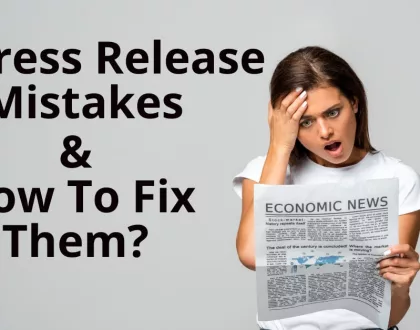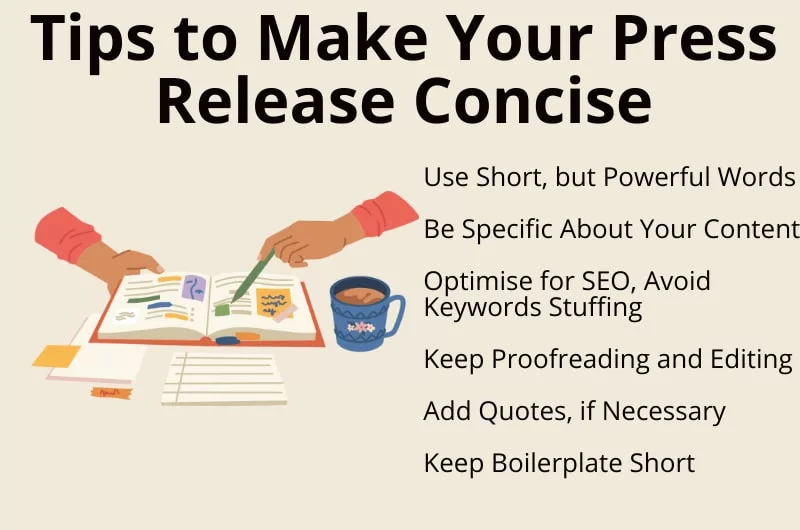What is the Right Press Release Length You Should Follow?

by Avneet Singh
A well-crafted press release can be a powerful tool for businesses and organizations to get their message out to the media and the public. However, one of the common questions that arise when writing a press release is: How long should it be? Is there a magical number of words or pages that makes a press release effective? In this blog post, we will explore the ideal press release length, the number of words it should contain, the number of pages it should span, and provide some tips on how to make your press release concise and effective.
How Long Should a Press Release Be?
The ideal length of a press release is a topic that has generated much debate among PR professionals and journalists. While there is no one-size-fits-all answer, there are some general guidelines you can follow. The length of a press release is a balancing act. It needs to be long enough to include all necessary information, yet concise enough to maintain the reader’s interest. Generally, the average length of a press release should be about one to two pages long. This length is sufficient to convey your message clearly and provide all relevant details without overwhelming the reader.
How Many Words Should Be in a Press Release?
When it comes to word count, aim for about 300 to 500 words. This range is typically enough to cover all the key points without being excessively wordy. This length strikes a balance between providing enough information to convey your message effectively and ensuring that it is concise and to the point. It’s important to remember that journalists and media outlets receive numerous press releases daily, so a succinct and to-the-point release is more likely to capture and retain their attention.
How Many Pages Should a Press Release Have?
In terms of pages, a press release should ideally be limited to one page. However, in some cases, it may extend to two pages if absolutely necessary. This includes all elements: headline, dateline, body text, quotes, and boilerplate. The key is to present the most important information on the first page, with the second page containing supplementary details or background information. Keeping this press release length ensures that the reader can quickly grasp the main points without having to sift through multiple pages. Avoid going beyond two pages as longer press releases can be overwhelming and less likely to be fully read.
6 Tips to Make Your Press Release Concise
Now that we’ve established the recommended length for a press release, here are some tips to help you make it concise and effective:
Use Short, but Powerful Words
Choose your words wisely and use simple, straightforward language. Avoid unnecessary jargon or complex terminology that could confuse your readers. Short and impactful words are more likely to resonate with your audience.
Be Specific About Your Content
Journalists receive numerous press releases daily. They spend only 5 to 10 seconds reading a press release before they decide whether it is worth their time or not. So Get straight to the point by providing the most important information in the first paragraph. Focus on the who, what, where, when, why, and how of your story. Avoid unnecessary details that do not contribute to the main message. Also, Avoid unnecessary backstories or contexts that can be covered in a separate document or interview.
Optimize for SEO, Avoid Keywords Stuffing
If you want your press release to rank well in online searches, it’s essential to optimize it for SEO. While it’s important to include relevant keywords for SEO purposes, overstuffing your press release with keywords can make it difficult to read and may sound unnatural and detract from its quality. We have written a detailed post on how to write a press release for seo.
Keep Proofreading and Editing
Editing is crucial in ensuring your press release remains concise. Remove any redundant information, and check for grammar and spelling errors. A well-edited press release is more likely to be taken seriously by journalists.
Add Quotes, if Necessary
Including quotes from key figures within your organization or experts in the field can add a human touch, credibility, and depth to your press release. However, use quotes sparingly and make sure they provide valuable insights or perspectives.
Keep Boilerplate Short
The boilerplate, which is the standardized information about your company at the end of the press release, should be kept concise. Include essential details such as your company’s name, contact information, and a brief description of your organization. This is not the place for extensive company history or product descriptions. We have written a detailed post on how to write a press release boilerplate.
Conclusion
In conclusion, the right length for a press release is one that allows you to effectively communicate your message without overwhelming the reader. Stick to a concise, one to two-page format with around 300 to 500 words. Remember, it’s not just about the ideal press release length, but also about the quality of the content. By following the tips outlined above, you can ensure that your press release is both impactful and succinct, increasing the likelihood of capturing the attention of your target audience. Remember that the ultimate goal of a press release is to generate interest and coverage, so make every word count.
Recommended Posts

10 Common Press Release Mistakes & How To Fix Them?
March 8, 2024

How To Write Great PR Pitches? [With Examples]
February 24, 2024

How to Write Great Press Release Headlines?
February 15, 2024


